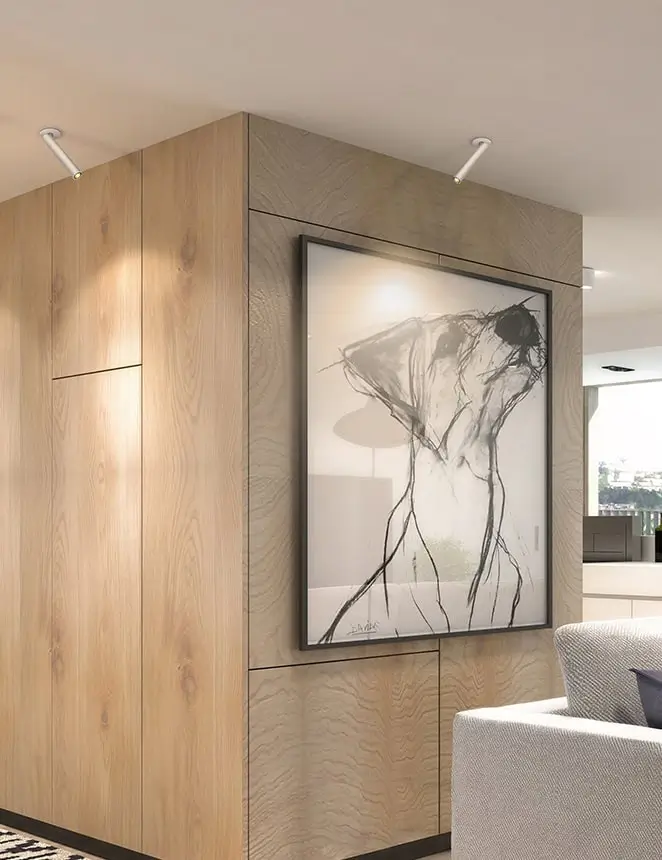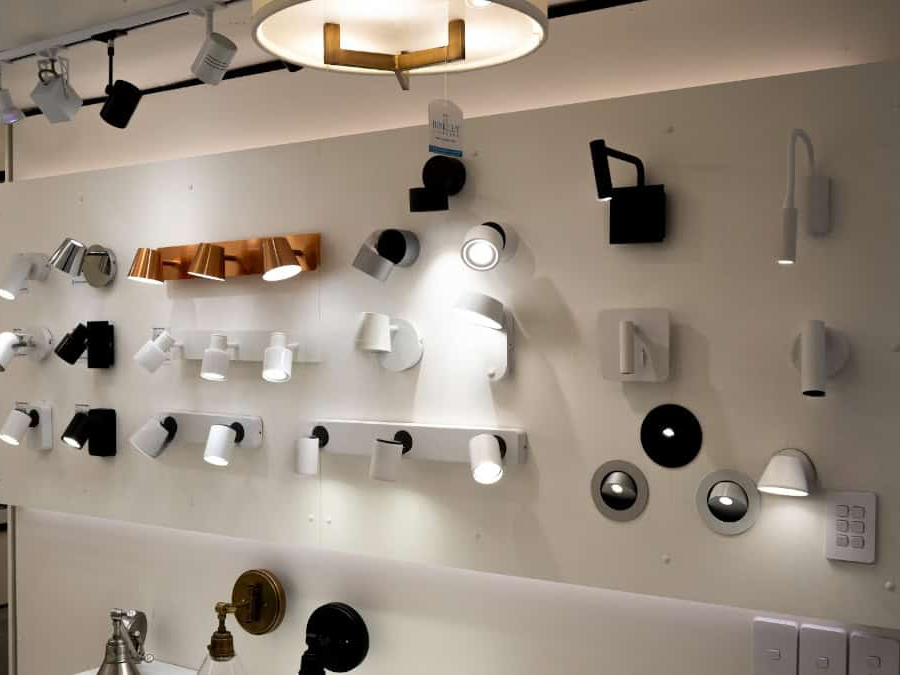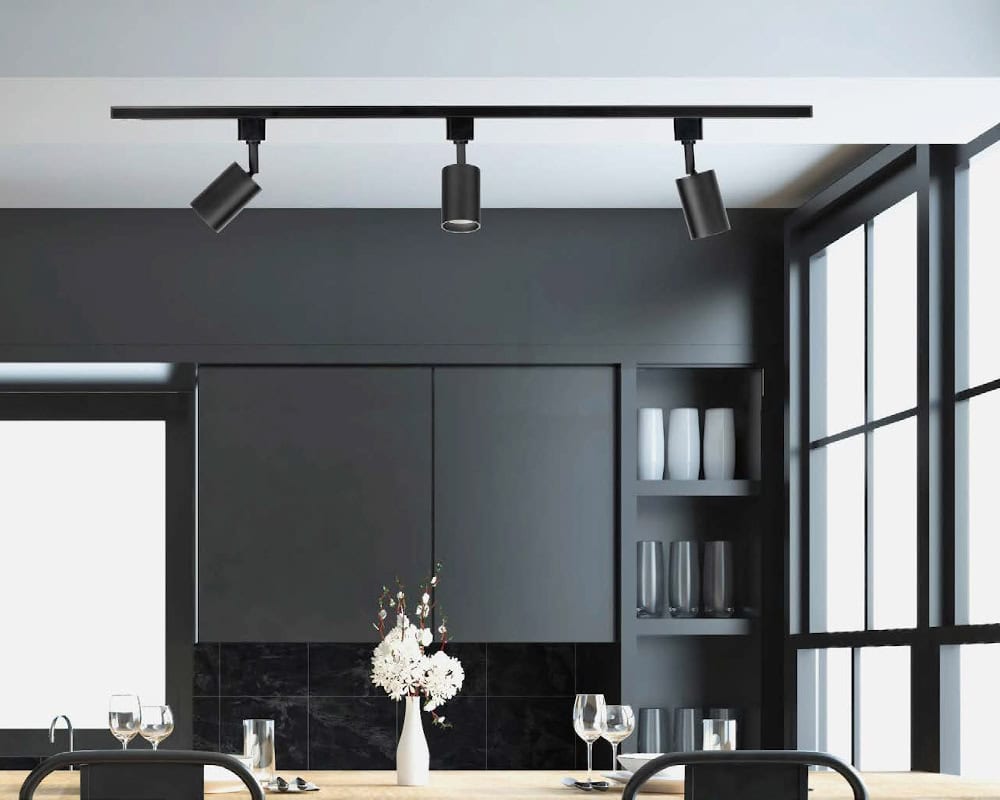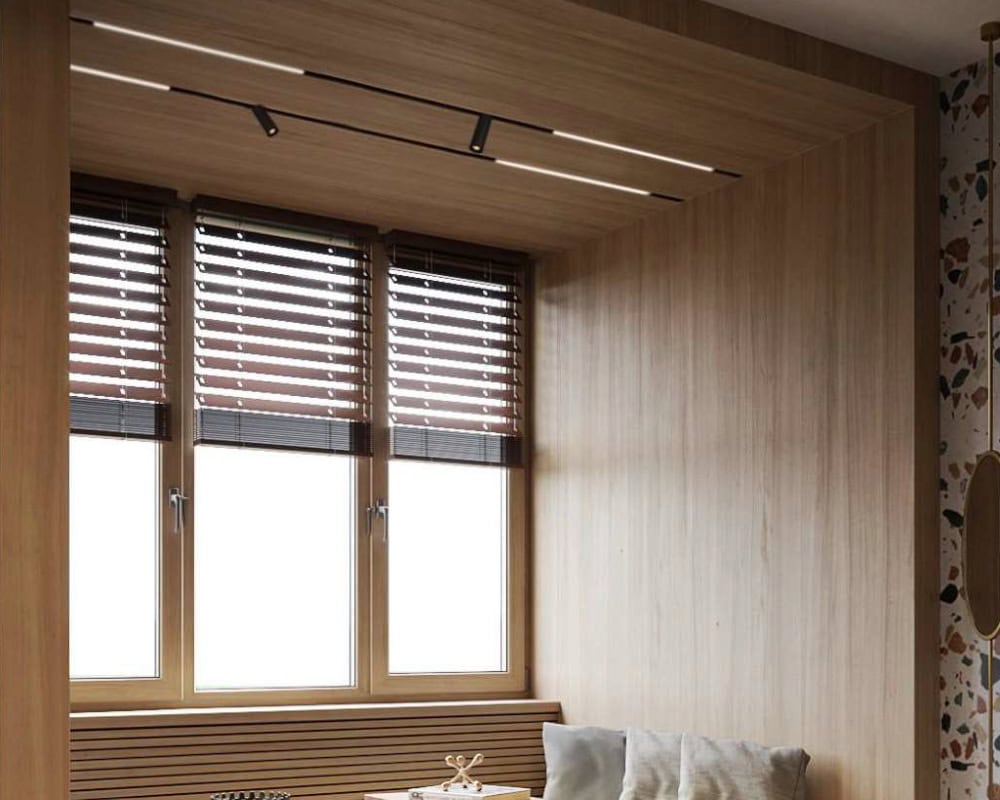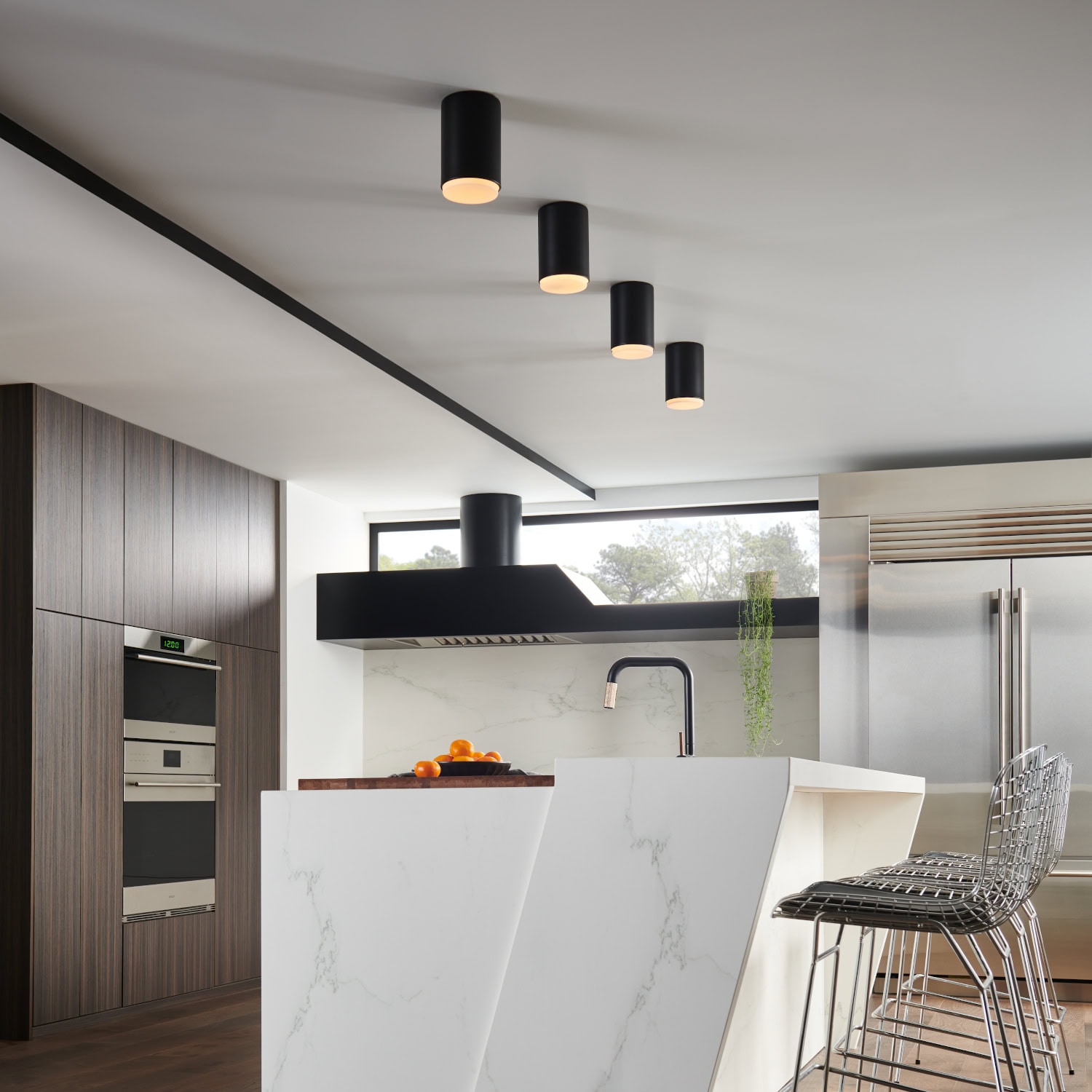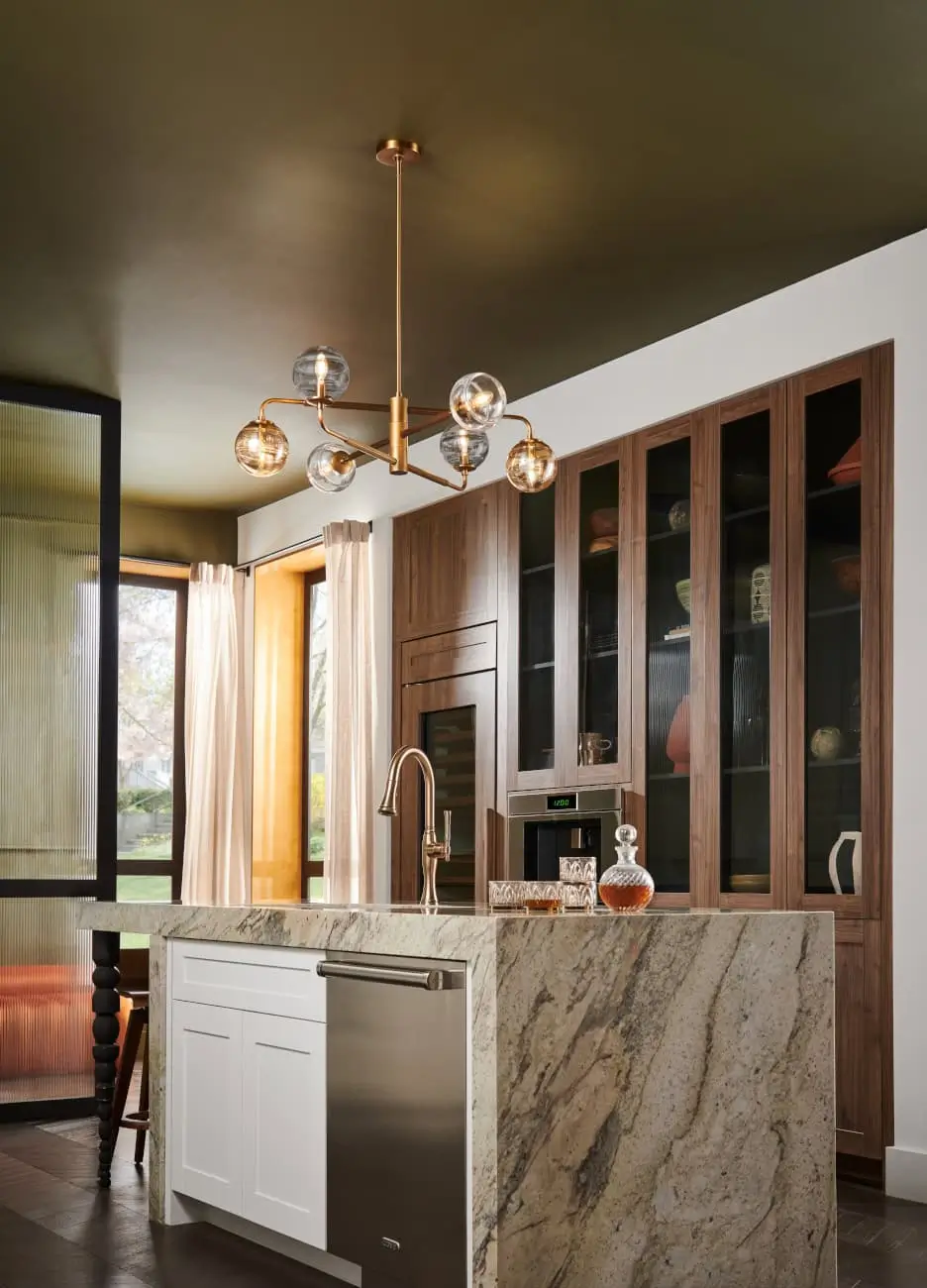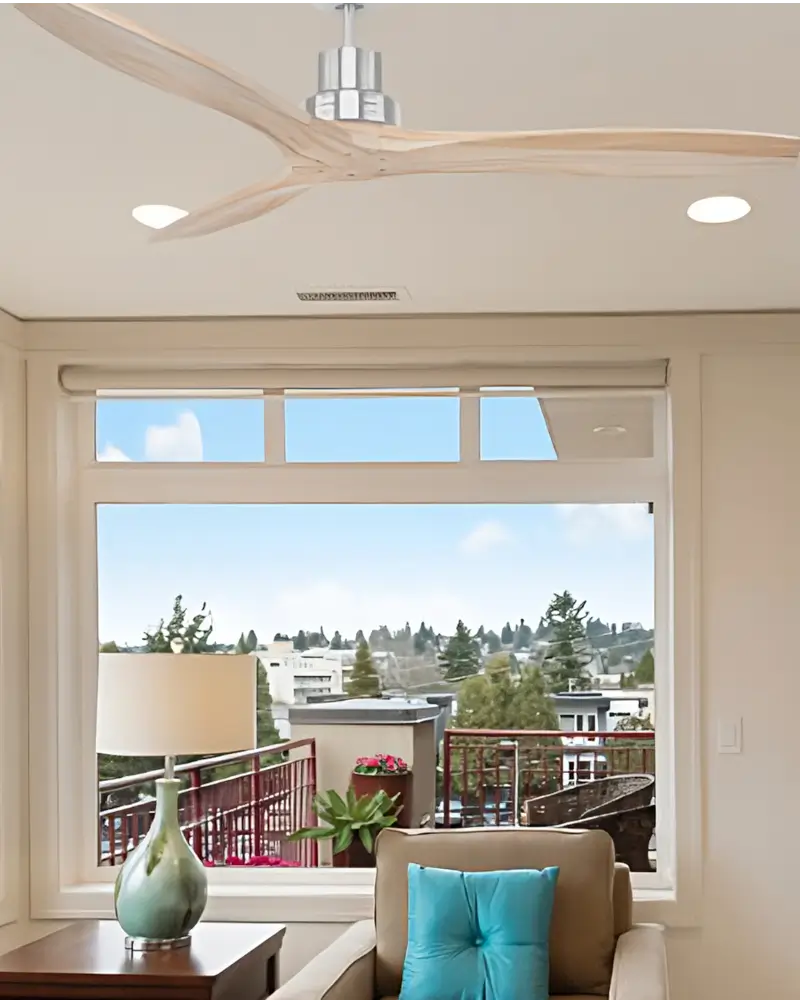Assessing Your Needs
Before you start shopping for spotlights, it’s important to identify your lighting needs. Understanding the purpose of the lighting will help you choose the right type of spotlights for each area of your home.
Identify the Purpose of the Lighting
- Task Lighting: Provides focused light for specific tasks such as reading, cooking, or working. Ideal for areas like the kitchen, home office, and reading nooks.
- Accent Lighting: Highlights architectural features, artwork, or other focal points in a room. Perfect for living rooms, hallways, and dining areas.
- Ambient Lighting: Provides overall illumination, creating a comfortable level of brightness without glare. Suitable for general room lighting.
These 3 types of lighting we use as a primary principle of Lighting Design we called Light Layering you can read more on Light Layering here.
Identify the areas in your home that require lighting. Consider the function of each room and how spotlights can enhance its usability and aesthetic appeal. For instance, you might need task lighting in the kitchen, accent lighting in the living room and picture lighting in the hallway areas.
Types of Spotlights
Spotlights come in various types, each suitable for different applications. Understanding the differences will help you choose the right spotlight for your needs.
Fixed vs. Adjustable Spotlights
- Fixed Spotlights or Surface Mounted Downlights: These provide a stationary beam of light in an attractive fixture, ideal for highlighting specific areas or objects. Surface mounted downlights are great for general room lighting and as well as task lighting, especially in low ceiling height spaces. We often use them over kitchen islands and desks in place of decorative lighting where they create an attractive feature without detracting from other decorative elements. Many surface mounted downlights can come with coloured internal reflectors.
- Adjustable Spotlights: These allow you to direct the light where it’s needed most, providing flexibility in lighting design. Adjustable spotlights are perfect for accent lighting and can be used to highlight artwork or architectural features. Adjustable spotlights can often come on a bar allowing you to push light into specific spaces or provide better illumination for strorage spaces and shelves.
Track Lighting Systems
Track lighting systems offer versatility and flexibility. They consist of a track that can hold multiple spotlights, which can be adjusted and moved along the track to suit your lighting needs. This type of lighting is ideal for kitchens, living rooms, and large open spaces.
We also have a low voltage track lighting system, this is more sleek than traditional track and offers a range of luminaires that magnetically fit into the track for an upmarket bespoke system for Kitchen Islands and Living Rooms.
Choosing the Right Bulbs
When selecting spotlights, consider the brightness, glare, colour temperature and colour rendering to ensure they meet your needs.
Brightness and Wattage Considerations
LED spotlights are energy-efficient and provide bright, focused light. When choosing LED spotlights, consider the lumens (brightness) and wattage to ensure you get the desired level of illumination. Higher lumens mean brighter light, while lower wattage indicates energy efficiency.
Glare
No one wants a harsh spotlight shining on them when they are trying to relax, many spotlights have snoots or barrels that hide the light from the viewer, which is particularly effective of living spaces and areas where the spotlight or surface downlights are being used as the ambient light source for a room. Also consider the beam angle here, a wide beam angle can create more surface glare on the output of the spotlight, where possible use the right beam angle for the task.
Colour Temperature
LED spotlights come in various colour temperatures, typically measured in Kelvins (K). Choose a colour temperature that suits the mood and function of the room:
Extra Warm White (2700K-3000K): Creates a cosy and inviting atmosphere, ideal for living rooms and bedrooms.
Warm White (3000k): A warm light with crispness to it, this is a great light for most areas of the home and can work in living rooms, kitchens and bathrooms.
Cool White (4000k): Provides a bright and clean light, suitable for kitchens, bathrooms and home offices.
Daylight (5000K-6500K): Mimics natural daylight, perfect for task lighting and home offices.
Colour Rendering
Colour rendering refers to how accurately a light source displays colours compared to natural light. The Colour Rendering Index (CRI) measures this accuracy on a scale from 0 to 100, with higher values indicating better colour rendering. Here’s how to choose the right CRI for different areas of your home:
- High CRI (95+): Ideal for areas where accurate colour representation is crucial, such as kitchens and galleries. High CRI lighting ensures that colours appear natural and vibrant, enhancing the visual appeal of your home decor and artwork.
- Moderate CRI (90+): This is a great benchmark for overall home lighting, providing excellent colour rendering for living rooms, bedrooms, and dining areas while it also can work well for kitchens. It ensures that colours are displayed accurately and vividly, enhancing the overall ambiance.
- Standard CRI (80-89): Suitable for general lighting needs. While CRI 80-89 is considered standard, it still offers decent colour rendering. This range is acceptable for living spaces, especially when budget constraints come into play and higher CRI options are not available. Using CRI 80 in living rooms, hallways, and utility areas can still create a comfortable and visually pleasing environment without compromising too much on colour accuracy.
By choosing the appropriate CRI for each area of your home, you can ensure that your lighting enhances the colours and details of your interior spaces, creating a more vibrant and inviting atmosphere.
Spotlight Placement
Proper placement and spacing of spotlights are crucial for achieving optimal lighting.
Tips for Optimal Placement
- Kitchen: Place spotlights and surface-mounted downlights above work areas such as countertops, sinks, and islands to provide task lighting. Select a tight beam angle to ensure these areas are bright and functional for tasks.
- Living Room: Use spotlights to highlight artwork and architectural features, creating a background circuit that accents the rest of your lighting. Low voltage track lighting is excellent for ambient lighting due to its aesthetic appeal. Washing light across walls in Living spaces can highlight areas of art and works as an excellent background light when on a separate dimmable circuit.
- Hallways and Foyers: Use spotlights to highlight artwork, architectural features, and sculptures to create accents in these spaces. Consider using lower-powered options for these tasks to set a more ambient mood.
- Walk-in Wardrobes: Spotlights on bars or track lighting can provide excellent illumination from the top to the bottom of wardrobes and shelves. When used correctly, they can give your wardrobe a showroom appeal.
Wall Washing vs. Art Lighting
When it comes to illuminating your artwork, understanding the difference between wall washing and art lighting can help you achieve the best results for your space.
Wall Washing
Wall washing involves using a wide spread of light to evenly illuminate a large section of wall. This technique is ideal for spaces where you have multiple pieces of art that may be moved around or rotated frequently. Wall washing creates a uniform glow that highlights the entire wall, making it perfect for showcasing collections or creating a dramatic backdrop in a room.
Advantages:
- Provides even lighting across the entire wall.
- Ideal for galleries or rooms with multiple pieces of art.
- Flexible for changing art displays.
Implementation:
- Use spotlights or track lighting with wide beam angles.
- Position lights at a sufficient distance from the wall to ensure even coverage.
- Consider using dimmable LED lights to adjust the intensity and create the desired mood.
Art Lighting
Art lighting focuses on illuminating specific pieces of art with targeted light. This technique uses multiple spotlights with narrow beam angles to highlight individual pieces, bringing attention to their details and creating a focal point in the room.
Advantages:
- Highlights individual pieces of art, emphasizing their details.
- Creates dramatic mood to a space and enhances the aesthetic appeal of the artwork.
- Allows for greater control over the lighting direction and intensity.
Implementation:
- Use adjustable spotlights or track lighting with narrow beam angles.
- Position the lights to avoid glare and shadows on the artwork.
- Use a combination of spotlights to achieve the desired effect, considering the size and placement of each piece.
Combining both techniques can also be an effective way to achieve a dynamic and versatile lighting scheme. For example, you can use wall washing to illuminate a large area while using art lighting to spotlight key pieces within that space. This combination allows you to create depth and interest, enhancing the overall ambiance of your home.
Conclusion
Choosing the right spotlights for your home involves considering various factors such as the purpose of the lighting, types of spotlights, brightness, colour temperature, placement, style, and control options. By carefully assessing your needs and following these guidelines, you can create a well-lit, inviting, and functional space. For personalized advice and assistance, consult with lighting experts who can help you select the perfect spotlights for your home.
